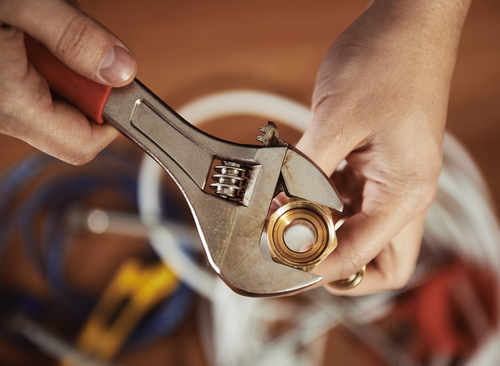
How to Get Your Team Using Plumbing Software
Table of Contents
How to get your team to use plumbing software
Whether you are a residential or commercial plumbing business, it can be a tall order to get all the tasks you are responsible for under control. This especially applies as the business expands. Not only do you need to track your bids and actuals to keep a profit, but there are a variety of other daily logistical functions, including:
- -Keeping track of the hours that your teams are working and how that time is getting used
- -Making sure that equipment and vehicles are being deployed in the manner that you want
- -Monitoring your financial status for accounting purposes
- -Checking blueprints
- -Keeping up to date on regulations
The combination of all these essential points is why utilizing plumbing business software is important. Whether you get plumbing software for free or opt for a premium package, the choice to use software allows for a suite of options that simplifies and organizes essential business functions. However, one step that often gets ignored in this selection process is making sure that you have a good onboarding plan. Even the best plumbing software is only going to be effective if you get your team to buy-in. Here’s how to make that happen.

Show The Value To The Team
One of the biggest roadblocks that crops up when onboarding with plumbing software or other business software is that the teams on the ground see little value in it for themselves. In their eyes, it’s simply more work without any added benefit. While you could put your foot down and emphasize that it’s a matter of compliance, that’s only going to create resentment for the software as well as its leadership.
So, when introducing new plumbing software, make sure to show benefits for the workers as well as the company overall. For example, requiring recording and reporting of hours makes HR’s job easier, but it also ensures that workers get their proper contributions/overtime. Yes, there’s the common reasoning that increasing profit will trickle down to better compensation for workers, but you want to provide concrete Day 1 benefits that everyone can see.
Use Role-Based Training
Many plumbing companies, after investing in software, decide to buy an entire suite rather than just individual components. This is generally more cost-effective in the long-term, and also means that they’ll have all the functionality they need for current and later situations. The one issue here is that this means a lot more for your team to learn. A good way to circumvent this issue is by putting different members of the team in charge of mastering a certain aspect of the software. By doing this, you save time as opposed to having to onboard an entire team on every little detail.
In addition, it helps give your team members a little more authority. Rather than a tool being forced on them, they have more responsibility for getting the rest of the team up to speed. How do you go about delegating who learns what? You can either base it on past experience, seniority, or who is most likely to use that software component over time.
Test Scenarios
You don’t want to have the first time you use new software to be in an emergency situation, and plumbing software is no different. In these training stages, think of potential scenarios where something may go wrong, and create a roadmap on how the software can be used to mitigate the issue. This also gives you a chance to do a bit of trial and error. Did a function you wanted to use for a certain issue, like scheduling or estimation, not work as planned? Better you find that out now than in a critical moment with a customer.
Solicit Feedback
Onboarding with new software is rarely going to be a smooth process. Even if your team is ready and willing to take on the new tasks, there are still going to be hiccups in the learning process. This makes it quite important that you set up a feedback chain at every step of the way. How are some of the different functions working? Does it require your team to change up other parts of their work schedule? Are there compatibility issues with your existing technology? All these points need to be considered and potentially relayed back to the provider for input.
Provider Support
Even with all these steps in place, your ability to help your team is only going to go so far. It’s important that the plumbing software provider that you work with has a plan in place to help provide support beyond troubleshooting. For example, does the provider offer training modules or information on how to use certain aspects of the software? This can be done online or with in-person demos. The important thing is to make sure that the provider you work with has a way that people can master the software at their own pace outside of your basic instruction.
Of course, troubleshooting and repair are important as well. You want to make sure that the professionals you work with have a plan set in place for remote support in case your team encounters issues. Being prepared in case things go wrong is a great way to start instilling confidence in your team.

Whether you are onboarding your team onto plumbing accounting software or other plumbing software programs, you, above anything else, want to make sure you are investing your time in a quality product. After all, the last thing you want to do is take the time onboarding plumbing software Quickbooks or something similar, just to have to go through it all again later. If you’re looking for a plumbing software app built for that need, eSUB is what you want. We have a variety of different functions for you to make use of, from plumbing bidding software to tracking labor and equipment. Because of our modular plumbing software design, you only have to buy what you need, saving you unnecessary costs and onboarding time.


